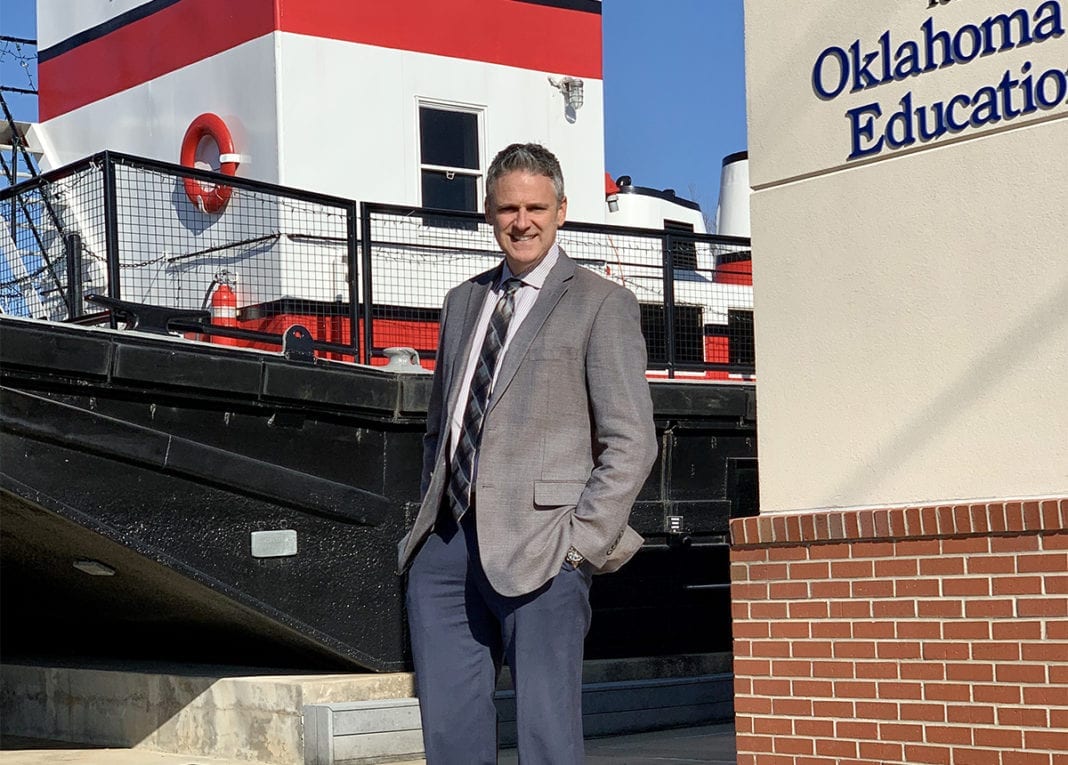David Yarbrough, director of the Tulsa Port of Catoosa since 2017, joined the staff in 2008 as manager of operations. Devastating flooding in 2019 affected the port and the entire McClellan-Kerr Arkansas River Navigation System. In October, Public Service Co. of Oklahoma transferred 2,000 acres along the waterway near Inola to the City of Tulsa-Rogers County Port Authority. We caught up with Yarbrough and got his thoughts on …
… the port’s status.
Industry incurred tremendous losses as a result of the flood. Shipping losses are estimated at $2 million daily while the waterway is closed to barge traffic. We lost shipping from mid-May until the first of October. Today, the Tulsa Port of Catoosa is shipping and receiving barges on a restricted basis because the waterway is still impacted by areas of shoaling – basically lots of sand and sediment that still block portions of the navigation channel. The U.S. Army Corps of Engineers estimates that it may be March or April before the system is completely back to normal operations.
… the impact of the Inola site.
The acquisition of the Inola property is one of the most exciting developments in the history of the Tulsa port. PSO has placed faith in us as an organization that can develop land into economic opportunity … and industrial development, with access to all utilities, as well as water and rail transportation options. 2020 will see the development of the master plan for the property and continued investment in infrastructure needs, such as railroad and roadway. Our port authority will bring the same business-friendly acumen to this location that we are known for at the Tulsa Port of Catoosa, and we will work to land large industrial projects to generate significant job creation and investment at this premier industrial facility.
… the port’s economic power.
Over 3,000 people work at the Tulsa port, which is host to about 70 industrial facilities. If you factor in other ports and terminals in Oklahoma, the direct maritime-related employment is about 7,500. Oklahoma ports typically ship 6 million tons of waterborne freight annually with a value of over $2.1 billion. Each year, the Tulsa port delivers freight to and from over 20 other states; we are part of a national economic engine.
… changes in the past 14 years.
We have evolved beyond just the development and operations of our industrial park and inland waterway port. Today, it’s critical … that we stay keenly involved in workforce development issues, which go hand-in-hand with our education efforts. We work with area schools, career tech providers and nonprofit organizations, such as OK2Grow, to help meet the current and future needs of manufacturing and trades. Our direct efforts are seen through a new program, in partnership with Tulsa Tech, called Port-Ability. This fast-track training class helps graduating high school students and under-employed adults transition into higher-wage manufacturing jobs. Recently, we had our second graduating class from this program. So, our more in-depth involvement in workforce and economic development are among the biggest changes.
… the port’s long-term goals.
Our primary focus will continue to grow and maintain our first-class industrial park and port, while we work to advance the development of the Inola property. In workforce development, we will increase our participation in promoting and providing training for careers in manufacturing and transportation. In our advocacy efforts, we will press our federal lawmakers and the administration to maintain and enhance the reliability of our waterway to ensure that it is here for another 50 years. To develop new business for the region, we will seek new cargo for barges to include intermodal containers. Finally, we will employ creative ways to promote the benefits of waterway commerce and the economic importance of the nation’s inland ports.



























